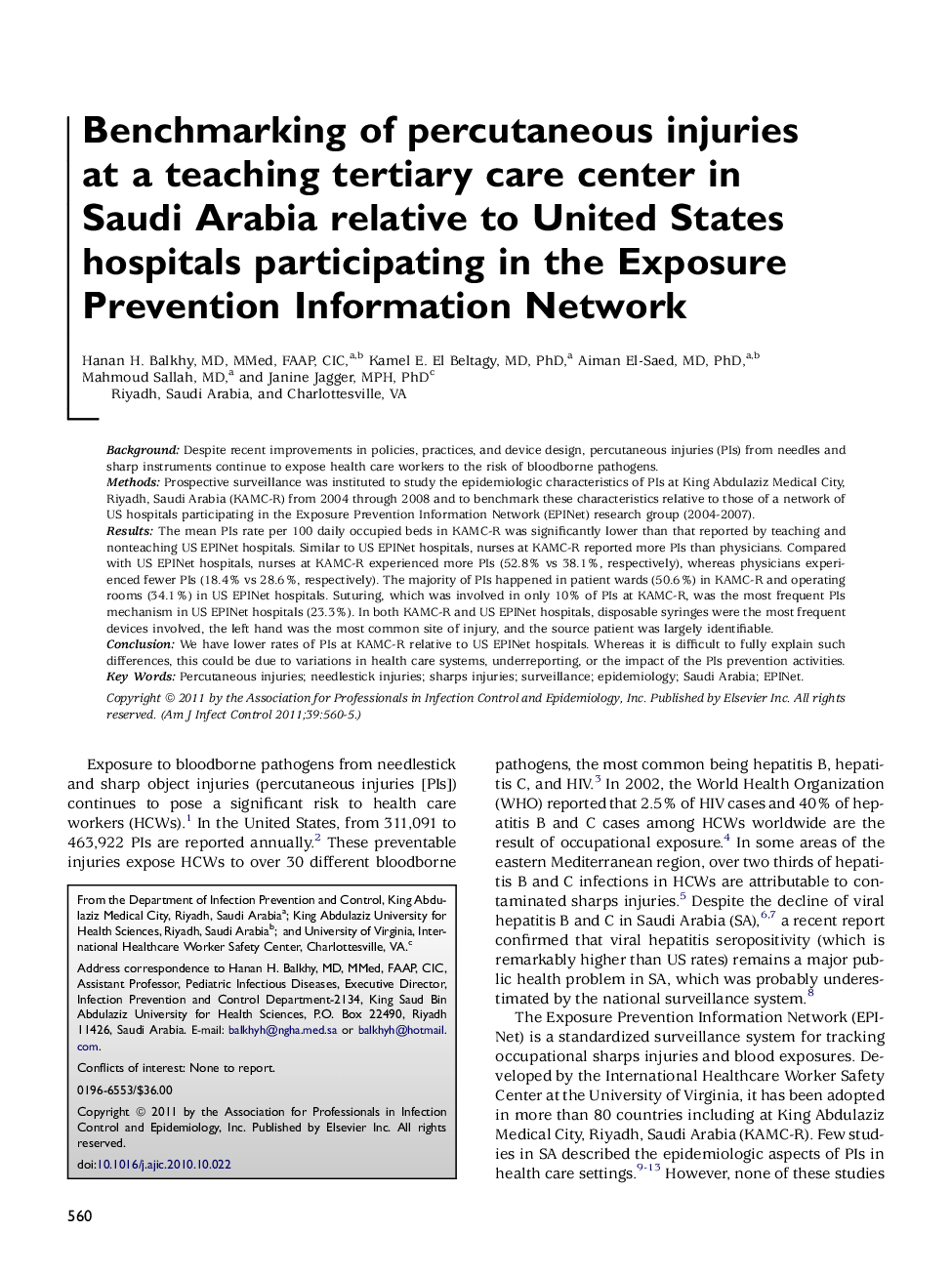| کد مقاله | کد نشریه | سال انتشار | مقاله انگلیسی | نسخه تمام متن |
|---|---|---|---|---|
| 2638784 | 1563521 | 2011 | 6 صفحه PDF | دانلود رایگان |

BackgroundDespite recent improvements in policies, practices, and device design, percutaneous injuries (PIs) from needles and sharp instruments continue to expose health care workers to the risk of bloodborne pathogens.MethodsProspective surveillance was instituted to study the epidemiologic characteristics of PIs at King Abdulaziz Medical City, Riyadh, Saudi Arabia (KAMC-R) from 2004 through 2008 and to benchmark these characteristics relative to those of a network of US hospitals participating in the Exposure Prevention Information Network (EPINet) research group (2004-2007).ResultsThe mean PIs rate per 100 daily occupied beds in KAMC-R was significantly lower than that reported by teaching and nonteaching US EPINet hospitals. Similar to US EPINet hospitals, nurses at KAMC-R reported more PIs than physicians. Compared with US EPINet hospitals, nurses at KAMC-R experienced more PIs (52.8% vs 38.1%, respectively), whereas physicians experienced fewer PIs (18.4% vs 28.6%, respectively). The majority of PIs happened in patient wards (50.6%) in KAMC-R and operating rooms (34.1%) in US EPINet hospitals. Suturing, which was involved in only 10% of PIs at KAMC-R, was the most frequent PIs mechanism in US EPINet hospitals (23.3%). In both KAMC-R and US EPINet hospitals, disposable syringes were the most frequent devices involved, the left hand was the most common site of injury, and the source patient was largely identifiable.ConclusionWe have lower rates of PIs at KAMC-R relative to US EPINet hospitals. Whereas it is difficult to fully explain such differences, this could be due to variations in health care systems, underreporting, or the impact of the PIs prevention activities.
Journal: American Journal of Infection Control - Volume 39, Issue 7, September 2011, Pages 560–565